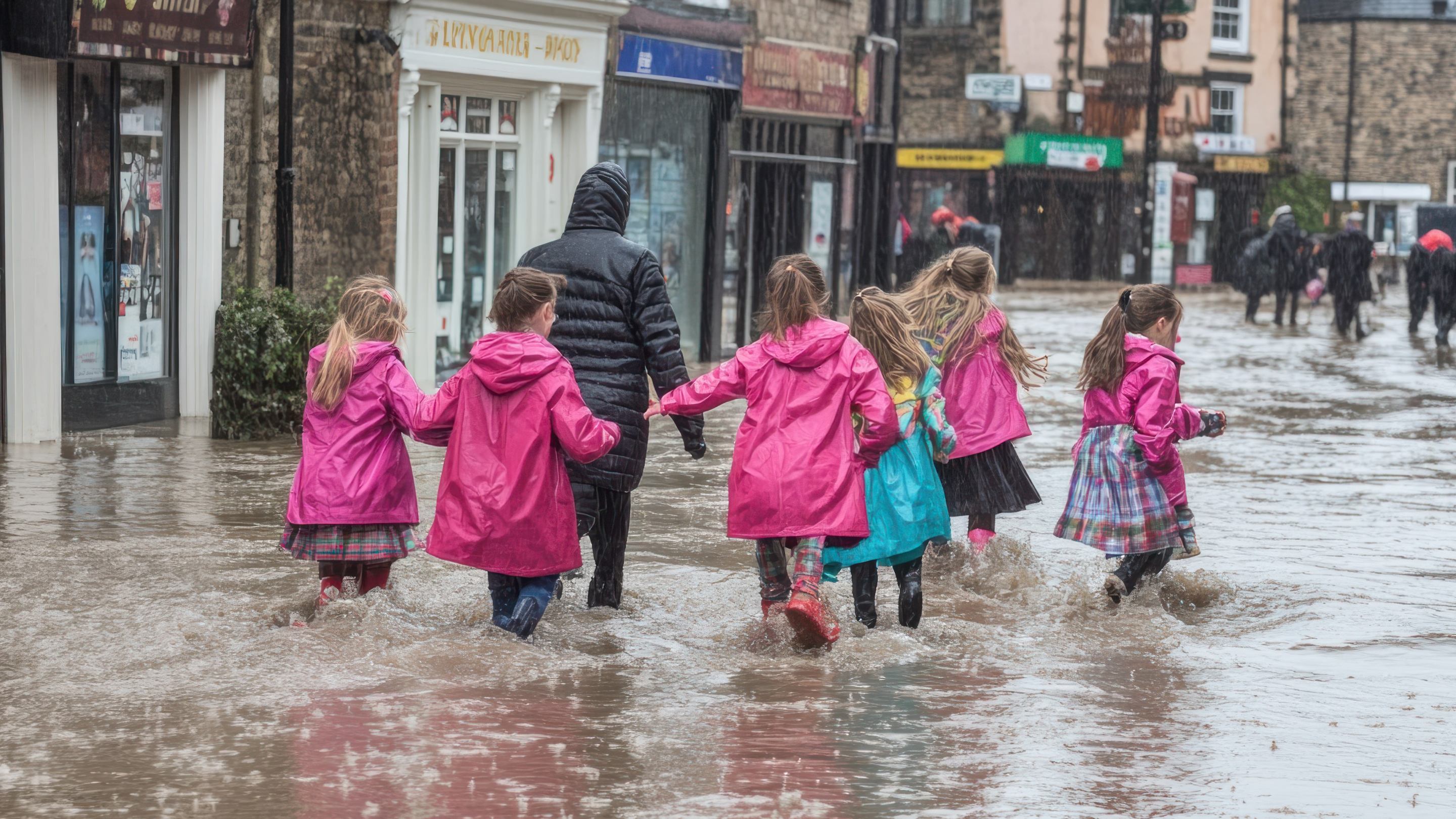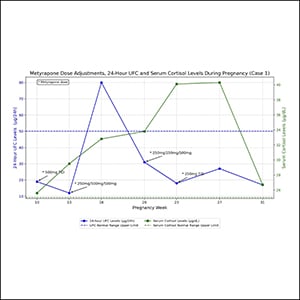Blog
-

New £4 million fellowship programme to explore AI’s impact on science
Image: ©Khanchit Khirisutchalual | iStock -

Rare earth stocks rally amid renewed U.S.-China trade dispute
In an aerial view, a container ship arrives at the Port of Oakland on October 10, 2025 in Oakland, California. U.S. President Donald Trump is threatening to impose a massive increase of tariffs on Chinese imports in response to China’s announcement of new export controls on rare earths. China controls an estimated 70% of the global supply of rare earths minerals.
Justin Sullivan | Getty Images News | Getty Images
Shares of U.S. rare earth miners rallied in premarket trade on Tuesday, extending sharp gains from the previous session after U.S. President Donald Trump threatened China with 100% tariffs over Beijing’s strict export controls on critical minerals.
Critical Metals jumped more than 38% in premarket, USA Rare Earth rallied 12% and MP Materials rose 9%. Shares of Energy Fuels were last seen up 11.4%, while NioCorp Developments stood nearly 9% higher.
The moves come as investors keep a close eye on the potential for a renewed trade spat between the world’s two largest economies.
Trump on Friday announced the U.S. would impose new tariffs of 100% on imports from China starting from Nov. 1, adding that the White House would also slap export controls on “any and all critical software.”
The U.S. president appeared to water down his rhetoric on Sunday, however, saying the situation with Beijing will “be fine.”
China, for its part, is the undisputed leader of the critical minerals supply chain, producing nearly 70% of the world’s supply of rare earths from mines and processing almost 90%, which means it is importing these materials from other countries and refining them.
Western officials have repeatedly flagged Beijing’s supply chain dominance as a strategic challenge, particularly given that critical mineral demand is expected to grow exponentially, as the clean energy transition picks up pace.
This is breaking news. Please refresh for updates.
Continue Reading
-

New OMEN Gear Delivers Tournament-Ready Performance with Fan-Inspired Design
News Highlights:
- Introduces the OMEN 16 League of Legends Limited Edition Laptop, featuring game-inspired aesthetics, upgraded thermal design, and intelligent performance optimization with OMEN AI
- Debuts the OMEN 25 Gaming Monitor,…
Continue Reading
-
Truecaller crosses 450 Million active users on Android globally
STOCKHOLM, Oct. 14, 2025 /PRNewswire/ — Truecaller, the leading global communication platform and Caller ID and spam-blocking service, today announced that it has surpassed 450…
Continue Reading
-

JWST may have found the Universe’s first stars powered by dark matter
In the early universe, a few hundred million years after the Big Bang, the first stars emerged from vast, untouched clouds of hydrogen and helium. Recent observations from the James Webb Space Telescope (JWST) suggest that some of these early…
Continue Reading
-

Genetics Pioneer Transforms Global Depression Research Through Multi-omics Discoveries
OXFORD, Oxfordshire, UK, 14 October 2025 — In a compelling Genomic Press Interview published today in Genomic Psychiatry, Dr. Najaf Amin unveils transformative insights that fundamentally reshape international understanding of…
Continue Reading
-

Robotics Information | AZoRobotics.com – Page not found
Terms
While we only use edited and approved content for Azthena
answers, it may on occasions provide incorrect responses.
Please confirm any data provided with the related suppliers or
…Continue Reading
-

If You’re Quick You Can Get a Lifetime Subscription to Curiosity Stream for Just $150
The world of streaming services is always expanding, and it means that you can find a platform for just about anything these days. An area that’s often underappreciated is the world of documentaries, and with so many available, it makes a…
Continue Reading
-

UK’s iconic landmarks at risk from climate change by 2050, according to new report
Jason Storah, CEO UK & Ireland General Insurance, Aviva - Some of the UK’s most well-known landmarks, including Edinburgh Castle, Giant’s Causeway and Liverpool waterfront likely to feel the impacts of climate change by 2050
- Surface water flooding could threaten millions of homes, including a 66% rise in the number of properties in high-risk areas[1]
- Major cities, including London and Manchester and parts of the North East could be hotspots for future surface water flooding[2]
- An additional 1.4 million more properties could be at risk from subsidence by mid-century[2]
- Leading insurer, Aviva, calls for urgent action to help the UK become climate-ready[3]
Some of the UK’s most well-known landmarks could be at risk from the impacts of extreme weather in future unless action is taken, according to a new report by leading insurer, Aviva.
Aviva’s third Building Future Communities report brings together the latest data to outline the risks that homes could face from multiple climate threats by 2050 and beyond, including flooding, subsidence and extreme heat. The report also highlights the importance of preventative measures to help protect homes, businesses and communities across the UK.
According to the report, some of the UK’s most well-known landmarks, including Cardiff Bay, York city centre and Liverpool waterfront, could be vulnerable to flooding because of rising sea levels, heavier rainfall and more frequent weather events. Even Edinburgh Castle, a hilltop landmark, could be at risk from surface water flooding from increased rainfall overwhelming drainage systems. The Giant’s Causeway, an iconic landmark in Northern Ireland, is likely to be increasingly exposed to coastal erosion and instability.
Our Building Future Communities report lays bare the risks that homes and businesses could experience by 2050. The findings are stark. Millions more properties could be at risk from flooding, with rising temperatures, increased urbanisation and inadequate drainage exacerbating the risks in future.
Rising temperatures could put other popular well-known attractions at risk. The arts and crafts Red House in south London is already suffering from subsidence linked to the prevalence of clay soils, which swell and shrink during wet and dry weather. Ongoing maintenance will be required to protect its facades as temperatures increase. Plans are already underway to protect these important sights from the impacts of extreme weather, but, like many properties across the UK, further adaptations will be needed to help them get ready for the future.
Jason Storah, CEO UK & Ireland General Insurance, Aviva, said: “In the UK we have seen the impacts of our changing climate and this year is no exception. Record temperatures, wildfires and flash flooding have affected lives across the globe and it is clear that action is needed to adapt to the increasing frequency of these events.
“Our Building Future Communities report lays bare the risks that homes and businesses could experience by 2050. The findings are stark. Millions more properties could be at risk from flooding, with rising temperatures, increased urbanisation and inadequate drainage exacerbating the risks in future.
“Well-known landmarks will not be immune to the threats. A changing climate is already impacting us and, in future, it is likely we will need to learn to live with extreme weather. Adapting our properties and infrastructure is key.
“To make the UK climate-ready, we are calling for urgent, collective action to be taken to ensure we can mitigate the risks we will all face.”
Increased threat from flooding
The report also outlines how many properties could be at risk across the UK. In England, the number of homes at risk from flooding is set to increase by over a quarter (27%), from 6.3 million to 8 million.[1]
While coastal flooding could put 3.2 million homes at threat, worryingly, surface water flooding– or flash floods – which are harder to predict and protect against, are also likely to increase. Environment Agency data suggests the number of properties at risk in England could rise to 6.1 million between 2040 and 2060, including a 66% rise in the number of properties at high risk[1]. But according to Aviva’s analysis, urban and densely populated areas, including London, Manchester and areas of the North East, could be hotspots for surface water flooding in future due to the greater prevalence of hard surfaces, which can prevent rainwater from draining[2].
The number of properties affected by flooding is also likely to rise in Scotland and Wales in the coming decades. In Scotland, 80% more properties could face river and coastal flood risk, and more than double are likely to experience surface water flooding by 2080[2]. Projections for Wales look equally stark, with an 88% increase in river and coastal flood risk and 47% more properties facing surface water flooding by 2120[2].

Children in pink raincoats wading through a flooded street Excess water will not be the only climate threat
While river, coastal and surface water flooding will become an increasing threat, some parts of the UK will face greater risks associated with hotter temperatures.
Aviva’s analysis suggests that subsidence is set to worsen in South East England, an area already vulnerable to such occurrences. However, by 2050, the areas at risk from subsidence could expand because of growing cities and rising temperatures. In future, parts of the Midlands, East of England and South Wales could be affected, exposing an additional 1.4 million homes[2].
As evidenced this spring and summer, temperature increases are expected to be more pronounced in the UK, with southern England once again facing the biggest changes. Projections suggest a potential rise in maximum annual temperatures of up to 3.5°C in some areas[4]. Soaring temperatures not only pose health risks, but they can also lead to a higher risk of wildfires and lightning strikes.
Storah added: “Despite the findings in our report, it is not too late to act. There is excellent work already underway across the UK, with owners, guardians, communities and councils working together to protect some of our most iconic places.
“There are solutions – big and small – which could help to improve the UK’s climate-readiness if we take collaborative and urgent action. Continued investment in flood defences, preventing unprotected new homes in flood zones, encouraging low-cost property resilience measures, and attracting more investment in nature-based solutions will help to mitigate the damage inflicted by a changing climate in future.
“By taking vital steps now, we can help safeguard millions of properties and protect important landmarks from climate impacts in the decades to come.”
The report highlights some of the projects that Aviva is involved with to help improve resilience. Across the UK, the insurer has pledged more than £80 million towards nature-based solutions projects which capture carbon, contribute towards flood resilience, and help to restore natural habitats. It was also one of the first insurers to take part in Flood Re’s Build Back Better scheme and has supported over 400 customers to improve resilience in their homes.
Tips for making your home climate-ready
As well as collective action from governments, industry and investors, residents can also take some steps to help make their homes more climate-resilient, including:
If your property is in a high flood risk zone, consider:
- Raising electrical sockets in higher-risk areas of the building.
- Fitting non-return valves on toilets.
- Installing flood gates and self-closing airbricks to avoid water getting in.
- Ensure your garden has suitable drainage to help absorb surface water and choose more permeable materials for hard surfaces, such as gravel or block paving. Avoid using fake grass, which can make it more difficult for water to be absorbed.
If your property is in a high subsidence risk zone, check that:
- Trees and large shrubs are planted at a safe distance from the property, are pruned regularly, and ideally planted with lower water demand species.
- There is no water pooling near your home’s foundations and keep drains clear and operational.
- If you are considering renovations or extensions, consider a structural survey to evaluate soil types and groundwater conditions and design your works accordingly.
If your property overheats during hot weather:
- Install internal and external sources of shade that keep the heat out without the need for electric-powered cooling. These include blackout blinds, external window shades, use of planting and installation of solar-reflective films, many of which are suitable for both homeowners and renters.
Aviva has produced a series of tables which outline the risks from flooding, subsidence and heat by constituency. Further information on how to use the tables is provided here.
Download a full copy of the Building Future Communities report, including Aviva’s Calls for Change, maps, and more details about the UK landmarks.
References:
1. Environment Agency, https://www.gov.uk/government/publications/national-assessment-of-flood-and-coastal-erosion-risk-in-england-2024/national-assessment-of-flood-and-coastal-erosion-risk-in-england-2024. [↑]
2. Various data points throughout the report, including maps and related data points contained in the macro context section, derive from Aviva’s own calculations and mapping analysis based on publicly available data from various sources. Further details are in the report: [↑]
3. Calls for change: [↑]
1. Strengthen planning rules to prevent unprotected development in current and future flood zones Over the last decade, 110,000 new homes were built in the highest risk flood zones, equivalent to 1 in 13 new homes built in total. If this trend were to continue, 115,000 of the Government planned 1.5m new homes would also be in the highest risk flood zones. This is evidence that the existing planning rules must be tightened to prevent unprotected development in these areas.
2. Amend building regulations to require low-cost proven property flood resilience (PFR) measures PFR measures are simple, low-cost proven interventions (such as self-closing airbricks) installed in a home to help resist surface water flooding and significantly reduce the amount of time and cost of recovering from a flood. Where included in a new home PFR measures are either cost-neutral (e.g. wiring electrical points from above) or low-cost. The additional cost for PFR for a new home is around £1,000.
3. Standardise the use of Sustainable Urban Drainage Systems (SuDS) in new developments In England, developers have the automatic right to connect surface water arising from new homes to the public sewerage system, irrespective of whether there is capacity. Implementation of Schedule 3 of the Flood and Water Management Act (2010) would end this automatic right to connect and provide a framework for the approval and adoption of SuDS paving the way for their widespread use. As it stands, SuDS are used inconsistently and the risk of surface water flooding is increasing significantly.
4. Mainstream Natural Flood Management (NFM), by revising government funding rules and supporting private finance markets NFM is primarily about slowing the flow of water using interventions like “leaky dams” to provide natural speed bumps for water across the catchment, absorb water, and prevent funnelling water that overwhelms infrastructure downstream. It is a cost effective, but under-utilised part of the UK’s flood resilience strategy. Government has proposed a new flood funding formula which would result in the total government budget spent on PFR, NFM and SuDS increasing from 1% (currently) to 18% of the total budget under the new formula. A common value framework is required for NFM to drive enhanced private investment. The Government can help potential investors deliver this enabling framework.
5. Establish a Resilient Buildings Taskforce to make recommendations on how climate resilience can be placed at the heart of policy and promote cross learning with the insurance, lending, professional and other related sectors With increasing subsidence, storm, flood and heat risk on the way, a Resilient Buildings Taskforce with appropriate representation from developers, social housing providers, surveyors, architects, insurers and lenders should advise government on how to adapt policy to improve the adaptation of existing and new homes to mitigate these risks.
6. Encourage investment and innovations to protect homes against heat risk, including extending Part O Building Regulation requirements to cover refurbishments of existing homes New cheaper innovations are required to help cool older homes when extreme heat occurs. Part O of the Building Regulations (which applies to new homes) sets out requirements to prevent excessive heat. The Climate Change Committee has recommended extending this requirement to the refurbishment of existing homes to drive the innovations that will help adapt older UK homes.
4. UK Climate Resilience Programme (UK-CRI), https://uk-cri.org/, baseline 1981–2010 standard normal [↑]
Enquiries:
Liz Kennett +44 (0)7800 692675
Alice Constable +44 (0)7350 398942
Continue Reading
-

Clinical Pearls From JCEM Case Reports
Beverly MK Biller, Nidhi Garg, Susan J Mandel, Lara McHan, Angeliki Theodorou, Thomas J Weber
JCEM Case Reports, Volume 3, Issue 11, November 2025, luaf225
https://doi.org/10.1210/jcemcr/luaf225Abstract
On July 14, 2025, the journal…
Continue Reading